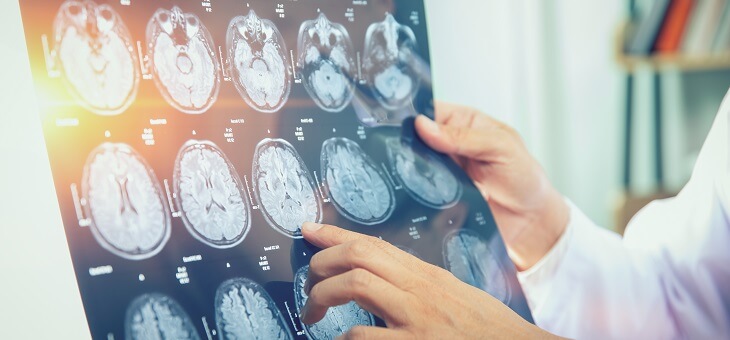Two Australian research projects, using two very different approaches, could hold the key to effective treatment of Alzheimer’s disease.
According to the Australian Institute of Health and Welfare (AIHW), Alzheimer’s disease affects around 380,000 Australians or around 15 in 1000 people. It disproportionately affects women more than men, and around 65 per cent of people with Alzheimer’s live unaided in the community.
There’s no cure for the disease, and even treating the symptoms has proven difficult.
But two Australian research projects, conducted by Monash University and St Vincent’s Institute of Medical Research, are bringing new hope to sufferers and expanding understanding of the disease.
Read: Exercise can play a key role in maintaining your mental health
Associate Professor Clare Anderson, of Monash University, is leading a project examining the use of acoustic stimulation technology to simulate slow-wave sleep. The aim is to better understand the link between sleep and developing Alzheimer’s.
“Slow wave sleep, which is a very deep state of sleep, is thought to be very important for memory consolidation, as well as clearing out toxins in the brain that are associated with cognitive decline,” Dr Anderson says.
“We hope this study will inform future interventions for sleep and cognitive health that reduce the risk of developing Alzheimer’s disease, including public health messaging promoting the importance of sleep as we age and the development of slow-wave enhancement sleep therapeutics.”
Read: Single brain scan can diagnose Alzheimer’s disease
The second project is led by Professor Michael Parker, at St Vincent’s Institute, and is testing a new type of drug that targets toxins in the brain associated with Alzheimer’s.
“The brain naturally has cells that act as garbage collectors by removing the toxins that are associated with Alzheimer’s disease,” says Prof. Parker.
“We have some very promising preliminary results that indicate the new drug we are developing can enhance this process without the negative consequences that have plagued drug trials.
“This is very exciting, because if we can successfully enhance the brain’s ability to clear these toxins, we delay, and even potentially reverse, some of the symptoms of Alzheimer’s disease.”
Read: Dementia diagnosis linked to pain felt years earlier: study
Both research projects have been awarded a Faye Williams Innovation Grant of $375,000 by the Dementia Australia Research Foundation to help make these experimental treatments a reality.
“These innovation grants provide vital insights into reducing dementia risk and establishing treatment options for people who live with, or are at risk of developing dementia,” says Professor Graeme Samuel, foundation chair.
“Without a medical breakthrough, the number of people living with dementia is expected to increase to almost 1.1 million by 2058. Innovation in dementia research is now more urgent than ever.”
If you enjoy our content, don’t keep it to yourself. Share our free eNews with your friends and encourage them to sign up.

